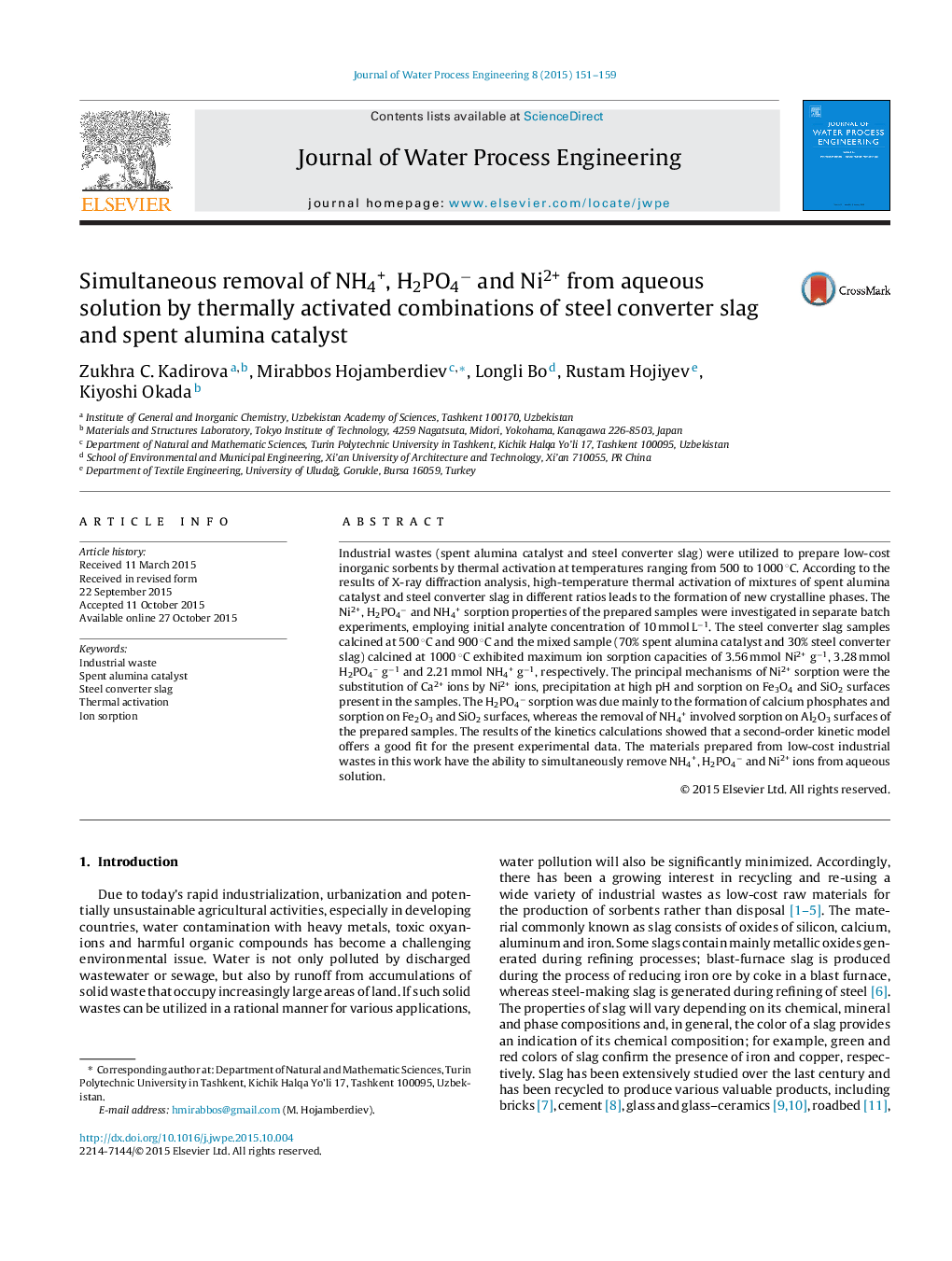| کد مقاله | کد نشریه | سال انتشار | مقاله انگلیسی | نسخه تمام متن |
|---|---|---|---|---|
| 232512 | 465290 | 2015 | 9 صفحه PDF | دانلود رایگان |

• Sorption materials are prepared from spent alumina catalyst and steel converter slag.
• The samples show good uptake properties for NH4+, H2PO4– and Ni2+ ions.
• H2PO4− sorption is due mainly to the formation of calcium phosphates.
• NH4+ sorption involves sorption on the surface of Al2O3 of the prepared samples.
• Low-cost industrial wastes can be readily utilized for environmental applications.
Industrial wastes (spent alumina catalyst and steel converter slag) were utilized to prepare low-cost inorganic sorbents by thermal activation at temperatures ranging from 500 to 1000 °C. According to the results of X-ray diffraction analysis, high-temperature thermal activation of mixtures of spent alumina catalyst and steel converter slag in different ratios leads to the formation of new crystalline phases. The Ni2+, H2PO4− and NH4+ sorption properties of the prepared samples were investigated in separate batch experiments, employing initial analyte concentration of 10 mmol L−1. The steel converter slag samples calcined at 500 °C and 900 °C and the mixed sample (70% spent alumina catalyst and 30% steel converter slag) calcined at 1000 °C exhibited maximum ion sorption capacities of 3.56 mmol Ni2+ g−1, 3.28 mmol H2PO4– g−1 and 2.21 mmol NH4+ g−1, respectively. The principal mechanisms of Ni2+ sorption were the substitution of Ca2+ ions by Ni2+ ions, precipitation at high pH and sorption on Fe3O4 and SiO2 surfaces present in the samples. The H2PO4− sorption was due mainly to the formation of calcium phosphates and sorption on Fe2O3 and SiO2 surfaces, whereas the removal of NH4+ involved sorption on Al2O3 surfaces of the prepared samples. The results of the kinetics calculations showed that a second-order kinetic model offers a good fit for the present experimental data. The materials prepared from low-cost industrial wastes in this work have the ability to simultaneously remove NH4+, H2PO4− and Ni2+ ions from aqueous solution.
Figure optionsDownload as PowerPoint slide
Journal: Journal of Water Process Engineering - Volume 8, December 2015, Pages 151–159